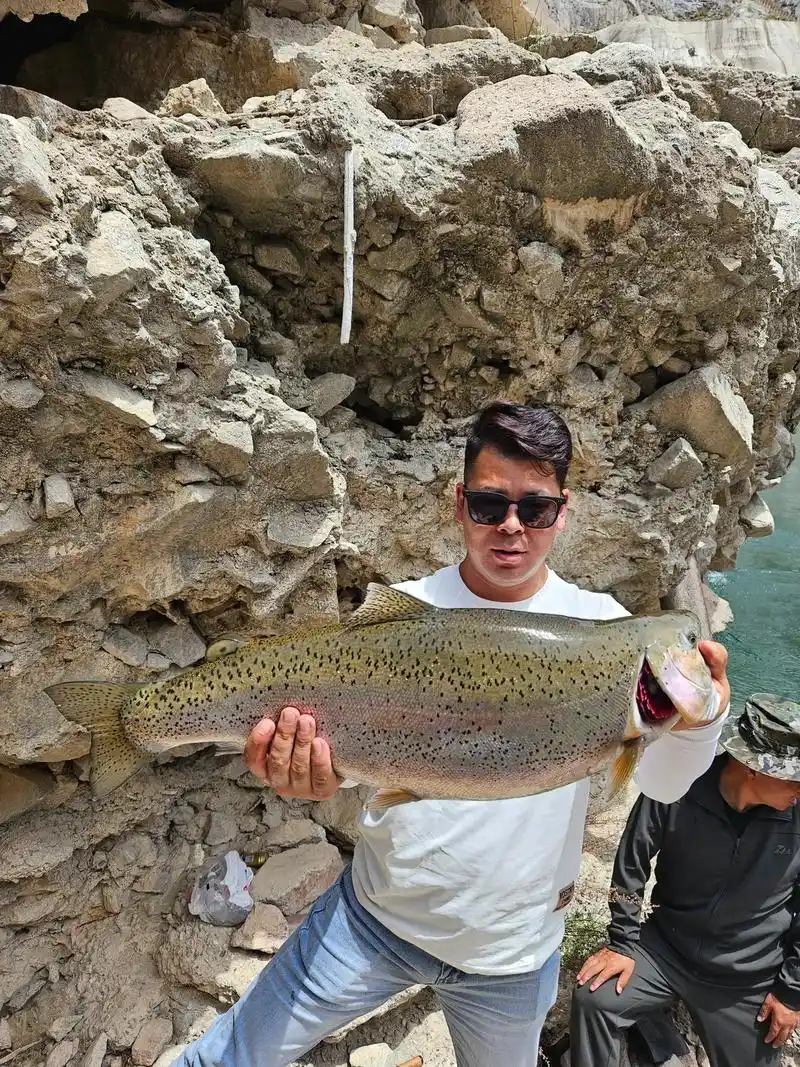Fly fishing in fast-moving rivers presents a unique set of challenges and opportunities for anglers. The dynamic currents, turbulent water, and strategic behavior of trout demand a blend of skill, patience, and adaptability. Whether you’re a seasoned angler or new to the sport, mastering these techniques can significantly improve your success rate in these exhilarating environments.
Understanding Trout Behavior in Fast Water
Trout thrive in fast-moving rivers because these waters provide abundant food, oxygen, and protective cover. They often position themselves in seams—areas where fast and slow currents meet—to conserve energy while intercepting drifting insects, baitfish, and other prey. Key holding spots include:
Edges of riffles: Shallow, rocky areas where food is funneled toward waiting fish.
Behind boulders or logs: These structures create pockets of slower water where trout rest.
Undercut banks: Deep, sheltered zones near the riverbank where larger trout hide.
By focusing on these areas, anglers can target trout efficiently without wasting effort on unproductive stretches.
Essential Gear and Setup
Selecting the right gear is critical for navigating fast currents and presenting flies effectively:
1. Rod and Line: A 9-foot, 5-weight rod offers versatility for casting in tight spaces and handling larger fish. Pair it with a floating line for dry flies or a sinking tip for nymphs and streamers.
2. Leaders and Tippets: Lengthen your leader to 12–15 feet when nymphing to allow flies to sink deeper. Use level tippet material (instead of tapered leaders) to reduce drag and improve sink rates.
3. Flies: Prioritize weighted nymphs (e.g., bead-head patterns) and streamers with dark, high-contrast colors like black or olive. These stand out in murky water and mimic natural prey such as stonefly nymphs or sculpins.
4. Fish hooks: Opt for strong, sharp hooks in sizes 8–14 to handle aggressive strikes and prevent bending under pressure.

Effective Techniques for Fast Water
1. Nymphing in Turbulent Currents
Add Weight: Use split-shot or tungsten beads to ensure nymphs reach the riverbed quickly. Adjust the weight until your flies occasionally snag the bottom—this indicates the correct depth.
High-Sticking: Hold your rod tip high to keep the line off the water, reducing drag and allowing a natural drift. Focus on short, precise casts upstream to give nymphs time to sink.
2. Streamer Fishing
Short, Aggressive Strips: Cast streamers across the current and strip them back with quick, erratic motions to imitate fleeing baitfish. Dark-colored Woolly Buggers or articulated patterns are ideal for provoking reaction strikes.
Target Structure: Aim for submerged rocks, undercuts, or eddies where trout ambush prey. A well-placed streamer often triggers aggressive takes from larger fish.
3. Dry Fly Strategies
While less common in fast water, dry flies can work during hatches. Look for slower pockets or foam lines where insects collect. Use buoyant patterns like Chernobyl Ants or Stimulators and mend your line to maintain a drag-free drift.
Adapting to Water Conditions
1. High Water: After heavy rain or snowmelt, fish closer to the banks where trout seek refuge from the strongest currents. Use heavier flies and shorter leaders to maintain control.
2. Low Visibility: In murky water, opt for larger, flashier flies with UV-reflective materials. Trout rely more on lateral line sensing in these conditions, so vibration and movement are key.
Safety and Stealth
Fast-moving rivers demand caution. Always:
Wear a Wading Belt**: This prevents water from flooding your waders if you slip.
Use a Wading Staff**: Navigate slippery rocks with confidence.
Move Slowly**: Approach holding areas quietly to avoid spooking trout. Even in turbulent water, vibrations from heavy footsteps can alert fish.
Patience and Persistence
Trout in fast water are opportunistic but easily spooked. Work each section thoroughly, making multiple casts to prime lies before moving on. If a fish refuses your fly, switch patterns or adjust your drift before giving up.

Final Thoughts
Mastering fly fishing in fast-moving rivers requires a mix of technical skill, observation, and adaptability. By understanding trout behavior, refining your gear setup, and practicing precision casting, you’ll unlock the potential of these dynamic environments. Remember to prioritize safety, stay patient, and experiment with different techniques to discover what works best on your local waters.
For more detailed insights, explore resources on reading river currents, selecting Fish hooks, and advanced nymphing tactics to further elevate your angling game. Happy fishing!